regenerative agriculture
description: conservation and rehabilitation approach to food and farming systems
21 results
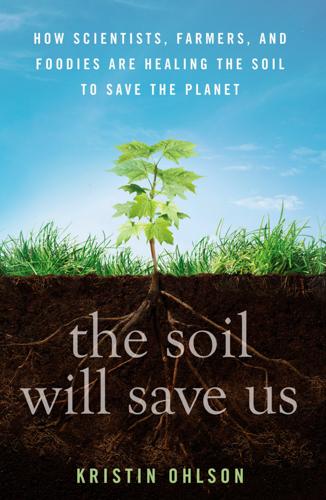
The Soil Will Save Us
by
Kristin Ohlson
Published 14 Oct 2014
I knew he’d also taken to spraying the leftover skim milk from his dairy creamery operation—which doesn’t fetch much of a price—onto the fields. An extension agent in Nebraska named Terry Gompert and some farmers there found out that the soil microbes love it. New insights like that spread quickly through the world of regenerative agriculture. Collins shook his head. “No milk.” Then, “Sorry I smell like fish. But it’s good to spray this stuff right after it rains and in the dark.” I followed him out to the farm he was building as the green hills turned black and clouds curdled in the sky. Collins had a bar of sorts set up by a barn.
…
Typically, Collins’s customers can afford to wait until the land makes its transition from a depleted conventional farm to a carbon-rich, productive one. “I can build them a bunch of soil,” Collins said. “That’s a new business plan for me: creating turnkey farms from the soil up for my clients, working landscapes with the most advanced ideas from regenerative agriculture. This is expensive land, but it’s going to take a lot of work to get it to the point where they can make money on it.” Putting together boutique farms might be a good way for Collins to make a living, but his vision for soil health is far from limited to these particular acres. As we talked throughout the next day, he explained that cities spend billions on downstream problems from depleted landscapes.
…
All of this has been set up with the input of a science board to ensure that when Innisfree Farm and the area farmers that join the observatory collect and publish data, it will be considered to be of research quality by any scientist anywhere—not to mention useful to other farmers. The portal to the site was built by people from the University of California–Berkeley’s environmental engineering department. “We want legitimacy,” Traverse explained. “Most of us who are doing regenerative agriculture really feel strongly that we are making a difference, but there’s a substantial lack of documentation to convince the rest of the world. Our project is trying to provide an infrastructure that might allow that to happen.” Traverse expects that other farmers can one day avail themselves of some of the fancy sensors he’s got in place now.
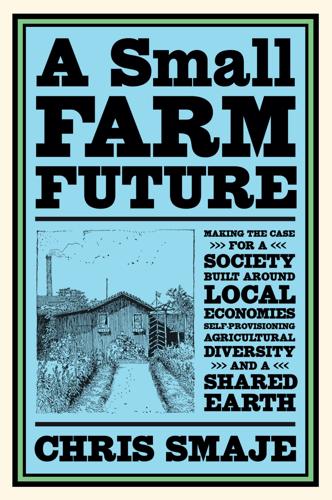
A Small Farm Future: Making the Case for a Society Built Around Local Economies, Self-Provisioning, Agricultural Diversity and a Shared Earth
by
Chris Smaje
Published 14 Aug 2020
So whereas conventionally raised pigs, for example, might be fed on soy grown from anywhere, including cleared tropical rainforests at high carbon cost, in an ideal scenario, organically raised pigs would only be raised on the capacities of the local farmscape to feed them. Developing local food systems that give people a clear sense of what those capacities are is critical if humanity is to steer beyond its present crises. This is one of the strongest arguments for a small farm future. Regenerative Agriculture Regenerative agriculture is a more recent and less formally organised movement than organics. It shares organics’ concern with soil health but deepens it via an emphasis in contemporary soil science on the symbiotic relationships between plants and other organisms living in their root zones. The basic idea is that plants exude sugars from their roots containing carbon fixed from the atmosphere by photosynthesis, which become food for a plethora of soil life, particularly fungi.
…
These in turn tap various nutrients in the soil and make them more available to plants, while storing much of the donated carbon. This cycle is disturbed by tillage but enhanced by growing a diversity of plants that develop symbiotic relationships with soil organisms. Therefore, proponents of regenerative agriculture emphasise the first three practices listed in the left-hand column of Table 6.1. Table 6.1. Regenerative agriculture practices and projected outcomes PRACTICES PROJECTED OUTCOMES 1. Minimum or no tillage 1. Soil building/soil protection 4. In-field crop nutrition 2. Continuous cover of living plants 2. Improved water infiltration 5.
…
It’s worth exploring how modern alternative agriculture might enable us to back out of the arable corner and feed the world’s people – but also exploring the difficulties it encounters in doing so and the trade-offs it must accept. By way of examples, I’ll look at two important aspects of alternative agriculture – intensification and biomimicry – before touching on how the solutions and difficulties faced by the movement play out in three specific approaches: organics, regenerative agriculture and permaculture. Alternative Agriculture as (Bio)Intensification Sceptics of alternative agriculture sometimes say that if it worked there’d be no need for the word ‘alternative’ – it would just be called ‘agriculture’. But beyond the charmed circle of fossil-fuelled industrial agriculture a good deal of the world’s food – possibly most of it across much of the ‘developing’ world – is grown ‘alternatively’ by relatively small-scale farmers using more labour-intensive and less capital- and carbon-intensive techniques, though it’s hard to assemble robust global data to establish this indubitably.22 The late Joan Thirsk, doyenne of English agricultural historians, describes a cyclical pattern through 750 years of English farming between a mainstream agriculture based on cereals and beef, and phases of ‘alternative agriculture’ when disjunctions in the agricultural economy forced farmers to pursue other options.23 The alternatives they chose were mostly higher-value and more labour-intensive enterprises such as dairying and market gardening.

What If We Get It Right?: Visions of Climate Futures
by
Ayana Elizabeth Johnson
Published 17 Sep 2024
See electric vehicles Executive Order on Tackling the Climate Crisis at Home and Abroad (2021), 314–15 extinctions and extinction risk, 34, 35, 128–29 Exxon, 144, 227 ExxonMobil, 263n F Fairness for Farmworkers Act, 83 farmers markets, 73, 155, 156 Farming While Black (Penniman), 76 farmworkers, 61–62, 70, 76, 82–83, 85 fashion and textiles, 200, 201, 229 Federal Energy Regulatory Commission (FERC), 331 FEMA (Federal Emergency Management Agency): flood risk mapping, 359–60 individual disaster assistance, 344, 357–58 local emergency management agency funding program, 353 problems and possibilities, 350–51, 355–59 relocation and, 375 FERC (Federal Energy Regulatory Commission), 331 fertilizers, 410 fifteen-minute city, 113 film, Leonard and McKay on climate communication in, 204–17 finance, 136–96 Clément on accelerating climate mitigation investment, 169–78 disaster-related debt and financial hardship, 148, 252, 270, 344, 357, 358 disaster-related finance needs, 270, 352–53, 354 fossil fuel divestment campaigns, 138, 139, 142, 263n Gallagher on low-carbon development and climate finance, 264, 268–78 helping developing countries meet their NDCs, 253 local emergency management funding, 352–53, 354, 361–62 McKibben on finance-focused climate action, 142–58 in the media and entertainment world, 207, 209, 210, 215 NDN Collective’s financing programs, 384 ocean farming finance, 307, 410, 411–12, 413–14 philanthropic funding for climate mitigation, 138, 139, 263n problems and possibilities, 63, 138–39, 169, 260 Shah on DOE funding programs and priorities, 181–96 See also Inflation Reduction Act fisheries, 304, 307, 378 declines and overfishing, xvi, xxi, 11, 67, 403, 418 See also ocean health and conservation fission, 188 See also nuclear power Flemma, Jean, 312, 313, 315, 316 See also Blue New Deal flooding, 20, 45 adaptive design for, 91, 234 problems and possibilities, 40, 88, 344, 345 socioeconomic impacts of, 251–52, 269–70 See also coastal ecosystems and communities; disasters; sea level rise flood insurance, 359, 360 flood risk mapping, 359–60 food justice certification, 82 Food Solutions New England, 52 food sovereignty, 74 food systems: Donahue on reviving regional agriculture, 50–63 Penniman on food sovereignty, food justice, and regenerative agriculture, 68–85 problems and possibilities, 34, 67–68, 70–71 what transformation looks like, 429 See also agriculture; regenerative agriculture food waste, 200 Foote, Eunice Newton, 14 forest ecosystems, 21, 25, 34, 35, 51 deforestation, 12, 22–23, 34 and the water cycle, 41, 42–43 forestry, sustainable, 52–54, 58 Formosa Plastics, 335–36 40 Acres and a mule, 83n fossil fuel industry: in Alaska, 333–34 in communities of color, 287, 289, 364, 367, 377 early knowledge of climate crisis, 14, 203 human health impacts, 287, 328, 332, 337, 377 lawsuits against, 261 lobbying, foot-dragging, and climate-mitigation opposition, 14, 138, 141, 144, 160–61n, 162 media advertising, 215 oil and gas drilling, 260, 333–34, 339, 340, 377 See also specific companies fossil fuel investment and financing, 138, 145, 151 divestment campaigns and positions, 138, 139, 142, 263n industry subsidies and tax breaks, 139, 164, 260, 376–77, 430 McKibben on finance-focused climate action, 142–58 fossil fuel use/reliance: carbon capture as justification for, 26 ending, 63 human health impacts, 13, 344 lawn and landscaping maintenance, 34 phase-out language in the COP28 agreement, 248 scale and impacts of, 12–13, 22, 138 See also clean energy development; coal; decarbonization; natural gas FPIC (free, prior, and informed consent) rights, 390–91 fracking, 12 Frankenstein (Shelley), 22 Frazier, Garrison, 83n free, prior, and informed consent (FPIC) rights, 390–91 fusion energy, 187, 188, 191 See also nuclear power Future Generations Tribunal, 238–39 G Gallagher, Kelly Sims (interview), 263–81 gardens, 66, 73, 371 General Mining Law of 1872, 339 Generate Capital, 180 generational project, 63 geothermal energy, 183, 186 Give Us Back Our Bones (Deeman), 64, 65 glacial melting, 11, 12 Global Climate Strike, 238, 239–43 Global Environment Facility, 273–74 global stocktake, 266 global warming, 14, 18–19, 22–23, 34 future projections and target warming limits, 18n, 20–21, 24–25, 28–30, 260, 266n Marvel on, 18–25 See also carbon emissions; fossil fuel entries “Global Warming’s Terrifying New Math” (McKibben), 142n GND.
…
That includes keeping roots in the ground, always—never bare and prone to erosion—by reducing tilling,[*47] and planting cover crops and perennials. We need to grow a greater diversity of crops, rotate those crops, use compost to replenish the nutrients in the soil, and eliminate chemical pesticides and fertilizers. Re-embracing these practices of regenerative agriculture will nurture healthy soil, which makes for healthy plants that collect atmospheric CO2 through photosynthesis. This CO2 is used to both build their tissues and feed carbon to the microorganisms (aka microbes) at their roots that deposit carbon into the soil. Along with worms and other critters, these microbes (such as bacteria and fungi) allow more absorption of water (instead of runoff), decompose organic matter, and help transfer minerals from the soil into the plant roots.
…
Maybe one of the only good pieces of work that the USDA does around the environment is the Environmental Quality Incentives Program. If we could make that most of what the USDA is doing for agriculture—stop subsidizing commodity crops, industrial ag that trashes the planet, and instead give a lot more resources to incentivize regenerative agriculture, like cover crops—we’d be in good shape. Ayana: I love this concrete list of things that need to change now. Leah: The good news is that since the food system, as we’ve said, is everything it takes to get sunshine onto your plate, there are a lot of right answers to the question of what people can do to help.
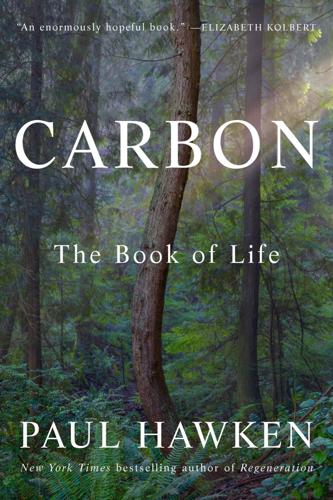
Carbon: The Book of Life
by
Paul Hawken
Published 17 Mar 2025
Using herbivores, prairie strips, key lining, crimpers, gully stuffing, microbial brews, complex rotations, fire ecology, and a bevy of other tools and techniques, they treat land degradation and soil pathology. Abraham Lincoln coined the term that applies to modern agriculture: “bass-ackwards.” Plant breeders have spent a century creating seed varieties that grow in impoverished soils when we should have focused on soil restoration. Regenerative agriculture has a simple maxim: create more life, above and below, step-by-step. Soil tests reveal much about the soil, but so do the weeds. Weeds that bedevil and invade reveal imbalances in the soil below, a response to underlying soil dynamics. Farmers employing regenerative grazing techniques, such as the famed thirty-thousand-acre wheat and sheep farm in Western Australia cultivated by the Haggertys, report the reappearance of beneficial native plants that had disappeared decades before.
…
See also trees biodiversity of, 86 cells of, 92–93, 101 climate change and, 89–90 complexity of, 90–91 consciousness and intelligence of, 113, 114 consciousness of, 102 crossbreeding and modification of, 88–89 energy and, 179 fertilizers for, 87–88 food of, 86 fossil fuels and, 86 fungi and, 104–9, 112 glucose and, 100–101 hearing by, 99–100 hormones of, 101 hygrometer of, 91 Indigenous peoples and, 96 insects and, 157 insects as, 136 intelligence of, 95–97, 178 language of, 94–99, 117 medicinal, 68–69 movements of, 91–92 nervous systems of, 101–2 neurotransmitters of, 101 nitrogen for, 87–88 phytoacoustics of, 96–97 reverence for, 87 roots of, 92–93 senses of, 86–95 ultrasound and, 99 weaponization of, 89 plasma, 74–75 plastics, 3, 79 polio, 33 Pollan, Michael, 46, 65 pollination/pollinators, 5, 86 Big Food and, 63 in farmland, 141 food and, 53, 57, 139 in forests, 152 insect population decline and, 135 insects as, 136, 138–39 monoculture agriculture and, 164 of trees, 93–94 wildlands and, 174 pollution, nanotubes and, 80 polysaccharides, 64 potassium, 163 potatoes, 48 Price, Weston, 66–67 progesterone, 18 protein, 12 at McDonald’s, 63–64 nitrogen in, 46 in saliva, 55 protons in carbon, 14 in carbon-12, 25 in iron, 21 protozoa insect population decline and, 135 Leeuwenhoek and, 32 plants and, 91 Provenza, Fred, 50, 70, 98 psoriasis, 69 Q quarks, 14 R radical sponge, 76 Rawlence, Ben, 150 reciprocity, 6, 191 reconciliation, 6–7 reefs, 5 regenerative agriculture, 168–69 Reid, John, 152–53, 154 religion, 34–35 renewable energy, 6, 90 resonances, 23 Resurrection (Mahler), 27–28 rewilding, 172–73 rice, 60–61 Rich, Adrienne, 57–58 rickets, 50 Roco, Mihail, 78 Roston, Eric, 6, 38, 65 rotifers, 32 Roundup, 141 al-Rūmī, Jalāl al-Dīn, 184 S Safina, Carl, 181 saliva, 55 scarabs, 159 Schiaparelli, Giovanni, 36 Schlanger, Zoë, 100–101, 152 Schmitz, Oswald, 175 Schrödinger, Erwin, 20 Schwartz, Judith, 167 scientism, 8 Seneca, 67–68 sentience, 9 September 11 terrorist attack, 40–42 seven generations, 186 shareholder dividends, 4 Sheldrake, Cosmo, 113 Sheldrake, Merlin, 104, 113, 181 Shribman, Matthew, 16 silicon-28, 25 singularity, 22 Smalley, Richard, 74–75 smallpox, 33 smell, of food, 53–54 social injustice, 2, 4 Society for the Protection of Underground Networks (SPUN), 109 soft drinks, 50, 65, 164 soil, 155–68 ants in, 91, 160, 165 biodiversity of, 162 birds and, 166 carbon and, 165–66, 173–74 climate change and, 165 deforestation and, 152 degradation of, 107–8 digestive processes of, 161–62 dung beetles and, 158–60 earthworms in, 157–58, 163, 165 erosion of, 5 fertilizers and, 87–88 food and, 57, 166–67 fungi in, 103, 104, 107–8, 111, 155, 156, 162 insects in, 155, 156–57, 165 microbes in, 165 nematodes in, 160–61, 165 pesticides and, 139 plants and, 92 sounds in, 166 sugar for, 64 of tallgrass prairies, 168 in wildlands, 172, 173–74 solar energy, 5 “Song of Myself” (Whitman), 184 soundscapes, 42–43 Southern Christian Leadership Conference, 188 soy calories from, 62 as genetically modified organisms, 89 monocultures of, 164 Spaceship Earth, 57, 71–84 sparrows, in Four Pests Campaign, 139–40 spectroscopes, 74–75 spores, of fungi, 105 SPUN.
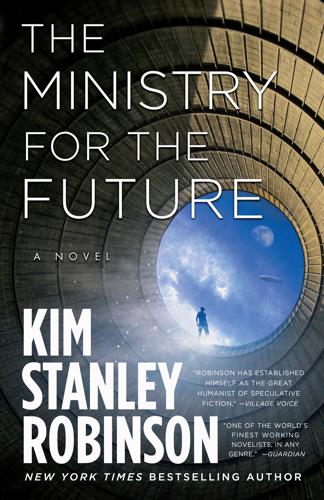
The Ministry for the Future: A Novel
by
Kim Stanley Robinson
Published 5 Oct 2020
Kerala has been big in this regard as a high-functioning state for almost a century now, devolving power to the local, and the state government alternating in a scheduled way between Left and Congress leadership. Much has been taken from Kerala and applied nationally. Then also Sikkim and Bengal have been developing an organic regenerative agriculture that, at the same time it provides more food than before, also sequesters more carbon in the soil, and this too has been taken up across the country. Indian agriculture moving into its post–green revolution is also a giant step toward independent subtropical knowledge production, achieved in collaboration with Indonesian and African and South American permaculturists, and its importance going forward cannot be over-emphasized.
…
He walked across town to his school and spoke to the assembled students, and all the young faces were enough to slay him on the spot. Talk about burning desire. They wanted what he had, and he didn’t know what to say to them. He said, To get anywhere in this world you must hitch your tiger to your chariot. He went out with them to the fields outside the city where they were working in the India Regenerative Agriculture job guarantee program. There was full employment in India now, and the work was hard but it was scientifically based too, and drawing carbon into the soil year by year in ways making them all safer. He worked with them planting corn and then repairing a terrace wall, and ended the day feeling cooked.
…
Surely you don’t mean to stop there? What do you have in mind? We’ve been looking at what India is doing. They’re leading the way now in all kinds of things. They were radicalized, Mary said. Yes, and who wouldn’t be? We don’t want what happened to them to happen in China, or anywhere else. So now they’re teaching us regenerative agriculture, and we need it. But of course it keeps coming back to how we pay for these good things. I suppose, Mary groused. Chan smiled. Of course. Think of it as land reform. That’s a financial arrangement too. So, land taxes, which in China means a tenure tax. Creation of a commons for every necessity.

Nomad Century: How Climate Migration Will Reshape Our World
by
Gaia Vince
Published 22 Aug 2022
Genetically modified crop varieties should also mean fewer ecologically harmful chemicals are required. Vegetables that today are farmed using excessive pesticides could be grown in efficient, automated urban vertical farms without the need for pesticides, or by small family farms that focus on sustainable methods and are paid for maintaining and restoring biodiversity. Regenerative agriculture will help restore and maintain soil carbon and fertility. Nature-based solutions to our environmental problems can only go so far – especially if the environmental problem is too extreme for the nature to thrive. ‘Green wall’ tree-planting projects across Africa and China have been building for more than a decade, aimed at holding back increasing desertification owing to global heating, but have shown mixed success.
…
Kung peoples Kutupalong refugee camp, Bangladesh Kyrgyzstan Lagos Lake Chad Lammy, David land ownership language/linguistics; language classes for new arrivals; and nation state Laos Las Vegas Latin America: Amazon region; first nation states in; fragile social systems in; impact of climate emergency; mega-El Niño (1997–8); migrants in Parla, Spain; rivers fed by glaciers; rural to urban migration League of Nations Leipzig liberalism Libya Lima livestock farming: by drone; feeding of animals; impact of drought; inhumane treatment of animals; insects as feed; land and water used for; meat and dairy subsidies; need for huge reduction in Ljubljana, Slovenia locust plagues London Macau Maillard chemical reaction maize production, global Malacca Straits Malaysia Maldives Mali Manchester Mangroves Marijuana marine life: fish populations; impact of global warming; starved of oxygen by algae marshes Mayan civilization Mayors Migration Council McCarthy, Kate McCay, Adam McConnell, Ed Medellín, Colombia media, prejudice against migrants Mediterranean Mekong River Melbourne, Pixel Building Merkel, Angela Mesopotamia Met Office, UK, methane Mexico Mexico City Miami Micronesians Middle East migrant cities: the Arctic as new region for; charter cities option; and circulation of community resources; ‘climate haven’ cities; creation of entirely new cities; as cultural factories; environmental sustainability; evidence of decline of tribalism in; expanding existing cities; in the new north; planning future cities; repurposing/adaptation of; successful urban development/planning in; as synergistic; training for rural migrants; water-management infrastructure migrants/immigrants: arrival in family groups; ‘Bangla’ communities in London; contribution to global GDP; creation of active markets by; distinction between refugees and; dominant hostile narratives of in West; ‘economic migrant’ term; evidence of decline in hostility towards; harnessing potential of; immigrant inclusion programmes; as indentured labour; internal migration; Boris Johnson’s language on; language classes for; levels of patriotism of; living in slums/shanty towns; mentoring and support for; as percentage of global population; racist and prejudicial tropes about; returning to origin countries; seasonal; situations of appalling abuse/danger; state-sponsored support needed for migration: and advantageous genetic modifications; barriers to today; as benefitting everyone; controlled by city authorities; as deeply interwoven with cooperation; and diversified genes/culture; evidence of decline of anti-immigrant feeling; free movement ends in twentieth century; and historic climate change; historical; human displacement at record levels; inherited routes and channels; and mental illness; as not reduced by aid; reluctance to move; and skin colour; of stuff/resources; as survival strategy used widely in nature; as valid and essential part of human nature; world’s major cities created by migration, arguments against/fears around: fears around crime and violence; and jobs; long evolutionary roots to prejudice; in the media; populist politicians; pressure on inadequate host services; prospect of radical change; resting on true/pure national identity idea; security/terrorism issues; and welfare systems migration, climate-driven: Covid cooperation as hopeful example; due to flooding; and geopolitical mindset; global agreement on pathways needed; hypothetical scenarios/models enabling; as inevitable; Kiribati’s ‘migration with dignity’ programme; mass movement already under way; move to higher elevations; national and regional relocation schemes; need for strong nation-states; need to plan practically now; numbers affected today; predicted future numbers; and Refugee Convention (1951); risk of domination by wealthy elites; as solution not problem; speed of movement of climate niches; water issues to be main driver migration, urban; access to health and education; community sponsorship models; family retention of farmland; and intensive infrastructure development; as most effective route out of poverty; population fall due to; role of business in migrant integration; from rural areas; successful management of; as unplanned and iterative; in the West (1850–1910); and workforce shortages in global north Miller, David mineral supples/extraction mining industry Mongla (Bangladesh) Mongolian steppes Morocco Mumbai, mussels Myanmar Nairobi Nansen, Fridtjof nation state: Anderson’s ‘imagined communities’; claims that country is ‘too full’; first created by revolutionaries; and genetic variation; and geopolitical mindset; and language; leases/purchases of territory by; model as often failing; nationality as arbitrary line drawn on map; need for reinvention of; as norm after First World War; and system of borders; translocation of existing nation states National Health Service (UK) national identity: and anti-immigrant feeling; and bureaucracy; creation of first nation states; ethnic and cultural pluralism as the norm; evidence of decline of tribalism; feelings of loss of/decline; and ideology of nationalism; lack of political meaning before end of eighteenth century; nation state as norm after First World War; need to change immigration narrative; patriotism of welcomed migrants; predicated on mythology of homogeneity; and supranational identity; transition to pan-species identity Nauru Neanderthals negative emissions technologies Netherlands; Delta Programme; Energiesprong house insulation Neukölln (Berlin) New Orleans New Story (nonprofit) New York City; ‘Big U’ seawall project; NYCID programme New Zealand; Managed Retreat and Climate Adaptation Act Newtok, Alaska Nicaragua Niger, West Africa Nigeria nitrogen Noem, Kristi nomadic pastoralism Nordic nations Normans North Korea Northern Ireland Northwest Passage Norway Notre Dame, University of, Global Adaptation Initiative nuclear power; fusion reactor technology Nusantara (Borneo) Nuuk (Greenland) Obayashi (Japanese firm) oceans/seas: acidification; as energy source in north; and enhanced weathering techniques; global warming absorbed by; impact of 4° C-hotter world; impact of carbon emissions; jellyfish explosions; long-distance migratory voyages; marine heatwaves; and migratory raiders; Miocene Era sea levels; North Atlantic currents; Northwest Passage; nutrient and oxygen circulation; ocean fertilization; release of carbon dioxide; rise in sea levels; sea grasses; sourcing food from; toxic algae blooms oil industry OmniTrax (US freight company) Ottoman Turks Overjeria, Bolivian village Paine, Thomas Pakistan Palaeo-Eskimos, Canadian palaeontology Palestine Panama Papua New Guinea Paris climate meeting (2015) Parla (near Madrid) passports Patagonia Patel, Priti patriotism Pearl River Delta Peatlands people-traffickers Peri, Giovanni permafrost, infrastructure built on Persian Gulf Peru Pfizer vaccine Philippines; nurses from Philistines Photios of Constantinople Phuket, Thailand Phytoplankton plains/steppes plants/vegetation: destruction of by wildfires; genetic tools to help adaptation; grass verge areas; heat damage to crops; during last ice age; move to plant-based diet; planted to increase crop yields; replanting of; rooftop vegetation/gardens plastic waste Pleistocene epoch Poland political and socioeconomic systems: in Africa; benefits to democracy of migration; cooperation during Covid upheaval; corporate food system; democracy based on inclusiveness; development of governance systems; end of multinational empires; erosion in the powers of global bodies; failure over decarbonization; far-right political parties/groups; fossil fuels as embedded in; geopolitical constraints; geopolitical implications of farming’s shift north; global institutions with enforceable powers needed; and ideal temperature question; inequality as failure of policy; institutional bias over skin-colour; institutional trust levels; international diplomacy; move from feudalism to centralized monarchy; nation-state model spreads; need for global planning over migration; need for redistributive policies; need for strong nation-states; new regional unions option; pledge of ‘strong borders’ as vote-winner; possible new political institutions/structures; post-war institutions and inequality; strong/stable institutions in north; translocation of existing nation states; and transnational rivers/’water towers’; vested interests in the rich world; Westphalian state system pollinators pollution Polynesians populist politicians Portugal postcolonial diaspora poverty see inequality and poverty Próspera ZEDE (embryonic charter city) Prussia Puerto Rico Putin, Vladimir Pygmies Qatar race and ethnicity: and anti-immigrant feeling; deliberately prejudicial policies; and demographic change; European colonialism; fallacy of biological ‘race’; heat related inequalities; unconscious bias in society; white supremacists rain gardens rainfall: altering patterns of; captured by roof gardens/storage; seeding of clouds rare earth metals Raworth, Kate, Doughnut Economics, recycling Refugee Convention (1951) refugees: from Afghanistan; barred from working; Burmese Rohingya in Bangladesh; climate change not in legal definition of; distinction between migrants and; EU seeks quota system for; hostile rhetoric towards; judgemental terms used about; and Nansen passports; privately sponsored; from Syrian crisis (2015–16) see also asylum-seekers renewable power production: as adding to, not replacing, fossil fuels; artificial light delivered by LEDs; hybrid hydro-solar power concept; hydroelectric plants; as leading job creator; and net zero targets; phenomenal rise in; refrigerant units in global south; solar-powered closed-cycle farming; storage technology; zero-carbon new-builds Republic of the Congo restoring our planet’s habitability; biodiversity loss; ‘blue carbon’; climate change-biodiversity loss as linked; cooling of global temperatures; decarbonizing measures; enhanced weathering techniques; future repopulation of abandoned regions; genetic tools to help species adapt; as global, labour-intensive task; natural restoration after human abandonment; nature guardianship in tropical regions; need for speed; negative emissions technologies; ocean fertilization; paying communities to protect ecosystems; regenerative agriculture; replanting of vegetation; solar radiation reduction tools, see also geoengineering retail services rice; SRI cultivation process rivers: drying out of; fed by glaciers; heavier rainfall as increasing flows; lack of in Gulf region; pollution discharged into; transnational Roatan, Caribbean island of Rocky Mountains Rome, ancient Romer, Paul Rotterdam rural living: and depopulation crisis; flight from drought/heat hit areas; impact of flooding; massive abandonment of in coming decades; migration to urban areas; and population expansion in Africa; remittances from urban migrants; as single largest killer today; and water scarcity Russell, Bertrand Russia: and charter cities model; depopulation crisis; economic benefits from global heating; economic sanctions on; expansion of agriculture in; infrastructure built on permafrost; invasion of Ukraine (2022); mega-heatwave (2010); migrant workforce in east; as potential area for charter cities; small-scale modular nuclear reactors in; water resources in Rwanda: Hutus and Tutsis in; special protective zones in; and UK asylum-seeker plan Salla, Finnish town of sanitation Saudi Arabia Saunders, Doug Sawiris, Naguib Scandinavia scientific discovery Scotland sea grasses Seasteading movement Seven Dials, London sex industry Shanghai sharing/circular economy Shenzhen Shyaam a-Mbul Siberia silicates Silicon Valley Silk Road Singapore sinkholes Skellefteå, Sweden slavery Slovenia slum dwellers; conditions at Kutupalong refugee camp; in Lagos; in Lima; and urban heat island effect; vulnerability to flooding social class/hierarchies: and anti-migrant attitudes; barriers erected against migration of the poorest; despair and anger of ‘left behind’ natives; development of; and gentrification; middle class migrants; myth of meritocracy; prejudice as often defensive fear-based reaction social networks; benefits of trade; cities as focal points for trade; Dunbar number; entangled ancestries/identities; forged by migrants; and knowledge flow; loss due to gentrification; migrants in family groups; and mistrust of outsiders; need for inclusive governance; and reluctance to migrate; in slum areas; social clustering of migrants; synergy created by; and unjust hierarchies; welcoming of strangers to social services see welfare systems and social services socioeconomic system see political and socioeconomic systems soil: ‘biochar’ use in; biomatter decay in; as carbon store; impact of heat on; impact of wildfires on; integrated soil-system management in China; and overuse of fertilizers; and perennial cereals; use of silicates in solar power Solar Radiation Management Governance Initiative South Dakota South Korea Southern Ocean Soviet Union soya production Spain Spitalfields, London stateless persons Sudan sulphate cooling concept Sumerian civilization Sunak, Rishi Sweden Switzerland Syrian crisis (2015–16) Tabasco, Mexican state of Tabassum, Marina Tahiti Tajikistan Tanzania Tasmania textiles industry Thailand Thepdet, Supranee thermal wallpaper Thiel, Peter Thirty Years War Thwaites Glacier Tokyo Toltecs Tong, Anote Tourism trade and commerce; cities as focal points for networks; free movement of goods; free trade; global trade deals; origins and development of transport infrastructure: aviation; decarbonizing of; electric-powered vehicles; equitable access to; in global south; and limitations of battery weight; problems due to extreme heat; sail power as due a revival; in successful migrant cities; use of foot or pedal trees: American chestnut trees; cycles of burn and recovery; as ‘emissions offset’; giant sequoias; ‘green wall’ tree-planting projects; vine-like lianas Trestor, Anne Marie tropical regions: benefit of solar cooling idea; impact of climate emergency; nature guardianship in; population rise in Trump, Donald Tsipras, Alexis tundra Turkey Turkmenistan Tuvalu UAE Uganda Ukraine: maize exports; Russian invasion of (2022) United Kingdom: ageing population in; anti-immigrant feeling in; Brexit; Commonwealth Immigrants Act (1962); and Covid pandemic; destruction of peatlands in; flood defences in London; historical migration to; history of granting asylum; ‘hostile environment’ policy; impact of climate emergency; and inevitability of change; low statutory sick pay level; migratory shift to southeast; planned fusion reactors; planning laws; renewable power production; Rwanda proposal for asylum-seekers; slow processing of asylum claims; small boats in English channel; wet-farming in United Nations: Global Compact for Safe, Orderly and Regular Migration (2018); HCR; Human Rights Council; International Labour Organization; International Organization for Migration; and Nansen Passport concept; suggested new global migration body United States: Chinese Exclusion Act (1882); ‘climate-proof’ cities in; as created from global migrants; dam removal in; demographic change in; and depopulation crisis; and extreme La Niña events; and future climate problems; Green New Deal; heat related inequalities; Homestead Act; immigrant-founded companies; impact of climate emergency; indigenous communities; and inevitability of change; lack of universal healthcare in; leases/purchases of territory by; low spending on social services; mass incarceration of Mexicans in; meat industry in; migration to since 1980s; and mineral extraction; municipal codes; net zero commitment; nineteenth century migration to; patriotism of migrants; refugee children in detention camps; resettlement project in Louisiana; rural to urban migration; seeding of clouds in; Trump’s work visa restrictions; ‘urban visas’ in; yield gap in university towns urban development/planning: Bijlmermeer (outside Amsterdam); and elderly populations; and inclusive government policies; machizukuri process in Tokyo; need for integrated high-rise/low-rise; new canals/water features to combat heat; parks/squares/public spaces; planning and zoning laws; slum clearance programmes; social capital investment in cities USAID Uttarakhand, Indian state Uzbekistan Venezuela Venice Vermont Vietnam Vikings war/violent conflict: over water scarcity; triggered by climate upheaval water, fresh: circulated, cleaned, stored and reused; closed-circuit water recycling; conflict triggered by scarcity; crop irrigation; desalination techniques; drip-irrigation systems; evaporative losses; geopolitics of water control; held in glaciers; impact of heat on supplies; importance of new water policies; inland lake systems; need for urban underground reservoirs; new waterways and river diversions; pumping of groundwater; purified sewage recycled; as resource anxiety of this century; running dry of aquifers; salination of groundwater; used for livestock; water pricing/tax policies Waterloo, Ontario weather systems: cyclonic storms in Bay of Bengal; El Niño events; extreme La Niña events; extreme weather events; Intertropical Convergence Zone (ITCZ); monsoon regions; trade winds welfare systems and social services: access to in migrant cities; and arguments against migration; and bureaucracy; despair and anger of ‘left behind’ natives; intensive infrastructure development needed; low spending on in USA; migrant access to; migration as benefitting social care systems; punitive restrictions on new migrants Westphalia, Peace of (1648) Whales wheat production, global Wilson, E.

This Is Not a Drill: An Extinction Rebellion Handbook
by
Extinction Rebellion
Published 12 Jun 2019
We must also abandon the fetish of ‘growth’ – a fetish first devised by neoliberal economists at the OECD and the Financial Times in the 1960s. They sought to encourage exponential economic growth to parallel the vast expansion of the globalized finance sector. Instead, our goal must be a decarbonized economy of full employment, based on renewables, recycling technologies, biodiversity, stock replenishment, sustainable and regenerative agricultural practices and other areas necessary for this transformation. This transformative programme will redefine what it is to be progressive. As the parliamentary debate on Heathrow’s expansion demonstrated, the twenty-first-century Left will split down into two camps. In one will be those who understand that our current fossil-fuelled, consumption-based economy is inimical to life on Earth.
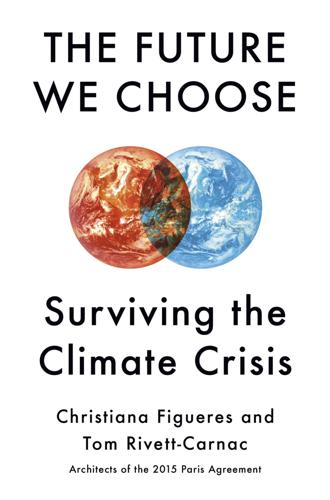
The Future We Choose: Surviving the Climate Crisis
by
Christiana Figueres
and
Tom Rivett-Carnac
Published 25 Feb 2020
Wheatley, Margaret J. Who Do We Choose to Be? Facing Reality, Claiming Leadership, Restoring Sanity. Oakland, Calif.: Berrett-Koehler, 2017. NATURE Baker, Nick. ReWild: The Art of Returning to Nature. London: Aurum, 2017. Brown, Gabe. Dirt to Soil: One Family’s Journey into Regenerative Agriculture. London: Chelsea Green, 2018. Eisenstein, Charles. Climate: A New Story. Berkeley, Calif.: North Atlantic Books, 2018. Glassley, William E. A Wilder Time: Notes from a Geologist at the Edge of the Greenland Ice. New York: Bellevue Literary Press, 2018. Kolbert, Elizabeth.
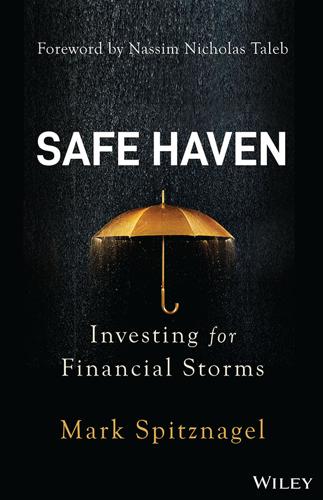
Safe Haven: Investing for Financial Storms
by
Mark Spitznagel
Published 9 Aug 2021
It's shortsighted and naïve; it's as if time is irrelevant, and “everything happens at once.” It's like a farmer focusing on crop yields while ignoring soil degradation. Oops, most do that too through modern industrial agriculture's reliance on monoculture crops, chemical fertilizers and pesticides—except, of course, for those of us who practice regenerative agriculture (such as rotational grazing). But when you shift your focus to that capital base and the geometric average of returns, magical things can start to happen. So, can you do the same thing with your demonic dice games, something a little more regenerative (like those farsighted farmers preserving the soil)?

Tomorrow's Capitalist: My Search for the Soul of Business
by
Alan Murray
Published 15 Dec 2022
The current times, Johnson wrote, called for bigger commitments and greater action—moving the goal post to a resource-positive future and outlining five strategies to take them there: 1. Expanding plant-based options and migrating toward a more environmentally friendly menu; 2. Shifting from single use to reusable packaging; 3. Investing in innovative and regenerative agricultural practices, reforestation, forest conservation, and water replenishment in our supply chain; 4. Investing in better ways to manage our waste, both in our stores and in our communities, to ensure more reuse, recycling, and elimination of food waste; 5. Innovating to develop more eco-friendly stores, operations, manufacturing, and delivery.

Less Is More: How Degrowth Will Save the World
by
Jason Hickel
Published 12 Aug 2020
The first step is to get past the irrational belief that all sectors of the economy must grow, all the time. Instead of mindlessly pursuing growth in every sector, whether or not we actually need it, we can decide what kinds of things we want to grow (sectors like clean energy, public healthcare, essential services, regenerative agriculture – you name it), and what sectors need to radically degrow (things like fossil fuels, private jets, arms and SUVs). We can also scale down the parts of the economy that are designed purely to maximise profits rather than to meet human needs, like planned obsolescence, where products are made to break down after a short time, or advertising strategies intended to manipulate our emotions and make us feel that what we have is inadequate.
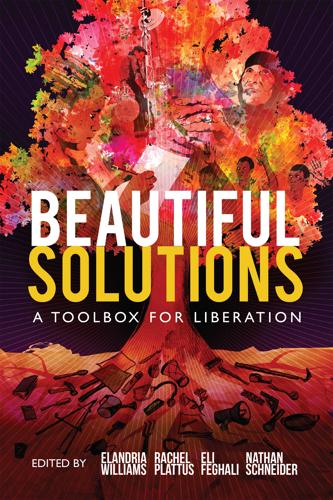
Beautiful Solutions: A Toolbox for Liberation
by
Elandria Williams, Eli Feghali, Rachel Plattus
and
Nathan Schneider
Published 15 Dec 2024
NDN FUND IS AN INDIGENOUS-LED ORGANIZATION which provides loans and investments to large-scale community and national development projects. The fund is unique in scope and in structure: it seeks to invest in Indigenous communities while building Indigenous political power with the rallying cry: “Defend, Develop, and Decolonize.” Starting in 2017, NDN Fund began with a vision to indigenize large-scale development, regenerative agriculture, food sovereignty, and equitable economic growth. Its parent organization, NDN Collective, is an advocacy organization for building Indigenous power. Creating the fund was a fundamental part of a strategy for transforming colonial economic practices through the application of Indigenous worldviews, knowledge, and perspectives.
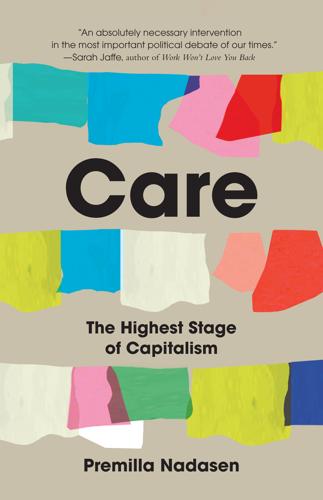
Care: The Highest Stage of Capitalism
by
Premilla Nadasen
Published 10 Oct 2023
As organizers Dara Cooper and Ashanté Reese write in their beautifully titled article, “Making Spaces Something Like Freedom,” Black food justice looks beyond “carceral and destructive food systems to new imaginaries of freedom, nourishment, sustainability, and affirmations of Black dignity and humanity.”33 Cooper has deep roots in environmental justice and community organizing across the US, with a particular focus on the Black farmers in the South who are leading the regenerative agriculture movement. She is a cofounder of and strategic advisor with the National Black Food and Justice Alliance, working toward both Black food sovereignty and land justice. She is also a cofounder of Health Environment Agriculture and Labor (HEAL) Food Alliance, a multiracial, multisectoral alliance that addresses workers’ rights, land, and the intersections of the prison-industrial complex and the food system.
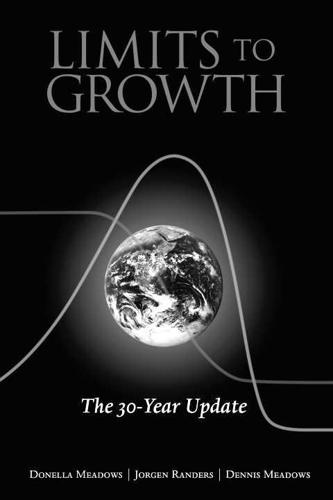
The Limits to Growth: The 30-Year Update
by
Donella H. Meadows
,
Jørgen Randers
and
Dennis L. Meadows
Published 15 Apr 2004
• An economy that is a means, not an end, one that serves the welfare of the environment, rather than vice versa. • Efficient, renewable energy systems. • Efficient, closed-loop materials systems. • Technical design that reduces emissions and waste to a minimum, and social agreement not to produce emissions or waste that technology and nature can't handle. • Regenerative agriculture that builds soils, uses natural mechanisms to restore nutrients and control pests, and produces abundant, uncontaminated food. • The preservation of ecosystems in their variety, with human cultures living in harmony with those ecosystems; therefore, high diversity of both nature and culture, and human appreciation for that diversity
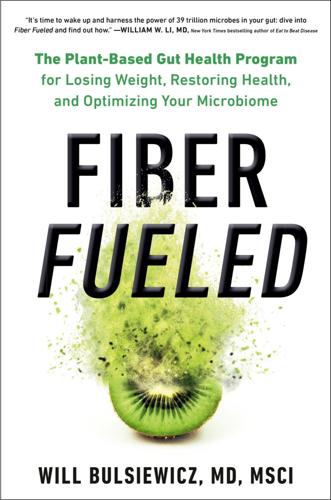
Fiber Fueled: The Plant-Based Gut Health Program for Losing Weight, Restoring Your Health, and Optimizing Your Microbiome
by
Will Bulsiewicz
Published 15 Dec 2020
If you don’t have healthy soil, you can’t have nutritious food. Human health starts in the dirt. We need to protect this precious commodity. When you spend your money, you are placing your vote in a way. You are empowering an industry. I, for one, choose to empower our organic farmers and regenerative agriculture. They are healers just as our doctors are. Only with them can we enrich our soil, increase biodiversity, and heal ecosystems large (our planet) and small (your gut). Let’s rally behind them and give them the support they deserve. Let’s take a step back for a moment and consider our modern life in the broader context of human evolution.
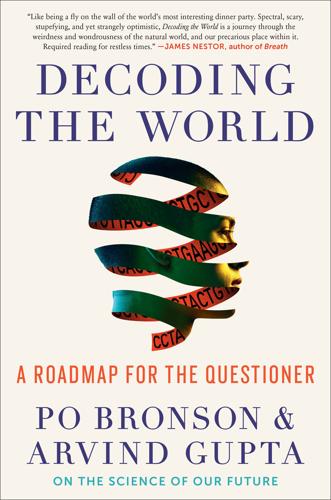
Decoding the World: A Roadmap for the Questioner
by
Po Bronson
Published 14 Jul 2020
He can do it for about $80 million a year; it’d take nine thousand drones and a staff of about 450 people. A solution that’s even easier is to recarbonize our farmland soil. Farm soil today has only about 1 or 2 percent carbon in it, because we’ve been burning off our topsoil for centuries with farming, releasing all the carbon. Farms that practice no-till regenerative agriculture can increase the carbon to more than 8 percent. Healthy soil is dark because of the carbon. There’s a massive amount of biomass in the ground—microbial life, nematodes, critters. Here’s the thing: We already have 9.9 trillion tons of carbon in our soil right now. We just have to increase that by 11 percent, and we’d pull a trillion tons of carbon out of the air.
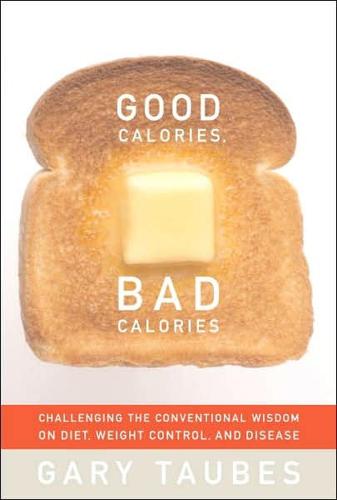
Good Calories, Bad Calories: Challenging the Conventional Wisdom on Diet, Weight Control, and Disease
by
Gary Taubes
Published 25 Sep 2007
After Trowell published a pair of articles on fiber and heart disease in The American Journal of Clinical Nutrition in 1972, Robert Rodale, a nationally syndicated columnist, wrote a series of articles on the research, touting fiber as the answer to heart disease and obesity. Rodale was president of Rodale Press and the Rodale Institute, both dedicated to furthering the cause of organic foods and chemical-and pesticide-free “regenerative” agriculture. Rodale saw Burkitt and Trowell’s fiber hypothesis as validation of the wisdom of organic foods and the agrarian lifestyle. “The natural fiber in whole processed foods may be instrumental in keeping cholesterol levels low and preventing the onset of heart disease,” he wrote. Burkitt and Alec Walker followed up Trowell’s articles with an August 1974 review in The Journal of the American Medical Association discussing the causal chain from fiber to constipation and “changes in gastrointestinal behavior” to the entire spectrum of Western diseases.
…
But Cleave would never accept that fat played any role in ill health at all.”) Fat and absence of fiber could be blamed: Trowell 1975a:25; Trowell 1975b:221. “major modification”: Trowell and Burkitt 1975:343. “Special ethnic groups…”: Trowell 1975b:221. Trowell’s pair of articles in AJCN: Trowell 1972a; Trowell 1972b. “regenerative” agriculture: Anon. 1990. “The natural fiber…”: Rodale 1973. “changes in gastrointestinal behavior”: Burkitt et al. 1974. “the tonic for our time”: Auerbach 1974. Reader’s Digest and the reaction: Kellock 1985:166–67. Burkitt’s lecture: Kellock 1985:175–85 (“catastrophic drop…” and “We eat three times more…,” 180–81).
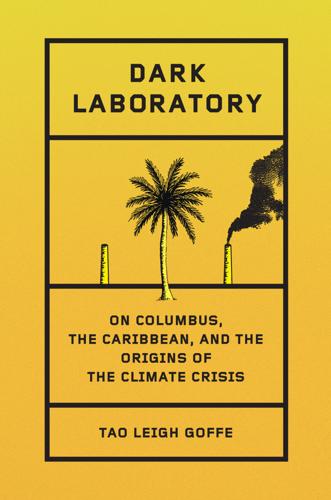
Dark Laboratory: On Columbus, the Caribbean, and the Origins of the Climate Crisis
by
Tao Leigh. Goffe
Published 14 Mar 2025
The Kalinago tribe rejects the brutality of “Carib” and its origins, and, like many Indigenous nations and Maroon settlements, it has continuously maintained its sovereignty for over four centuries since the European invasion. The island has maintained this autonomy via communal landownership and systems of regenerative agriculture. Although the living conditions in the territory are fraught with many external pressures, with an estimated 3,000 members of the Kalinago tribe out of the broader total of 70,000 Dominicans, the Native tribe maintains its own governance, and periodically votes on village councils and for the position of chief.

A Half-Built Garden
by
Ruthanna Emrys
Published 25 Jul 2022
E wanted to know about our clothes too, genuinely curious about everything from the original design of the dandelion pin to the way our network traced sources for materials. Adrien wandered off to look at other people’s work, but kept coming back to put in a comment or suggest a story Brend hadn’t gotten to yet. It reminded me of the Bet, where cousins and aunts could go on for hours about SEED programming or regenerative agriculture or the history of pre-Columbian cities in North America. We didn’t shuffle them away during parties—but then, our parties were more fun and had less specific performance requirements. Brend might like them. The rest of the room fascinated me almost as much as the conversation. This seemed more like a neighborhood common workspace than a twentieth-century office dedicated to a single purpose.
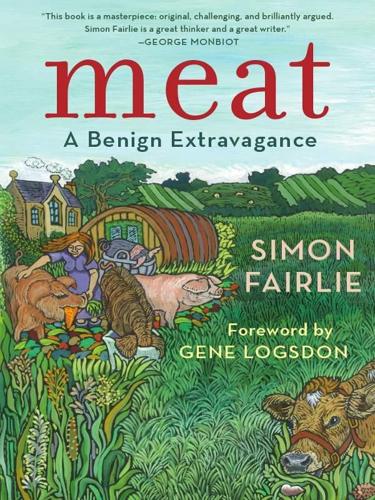
Meat: A Benign Extravagance
by
Simon Fairlie
Published 14 Jun 2010
The mainstream guru of carbon sequestration, Rattan Lal, estimates that the USA has the potential to sequestrate between 122 and 357 million tonnes of carbon per year on 491 million hectares – about ten per cent of the world’s arable and grazing land.53 This is way short of Dr Jones’ estimate of 185 million tonnes from 8.9 million hectares; the rate of sequestration anticipated by Jones is 40 times the average anticipated by Lal, who, by mainstream standards is a soil carbon ‘optimist’. Moreover, this rate of sequestration cannot be kept up indefinitely, since soil, like forests, reaches a state of carbon saturation – it only offers humanity a breathing space while we find an alternative to fossil fuels. So who is right? Jones claims that ‘sequestration rates under regenerative agricultural regimes may be quite a bit higher than estimated by current models’, in other words that the modelling system used in Australia and the UK, called Roth C, developed at the UK research institute at Rothampsted, is wrong. The Roth C model, Jones claims, ‘is based on the assumption that most carbon enters soil as ‘biomass inputs’, that is from decomposition of plant leaves, plant roots and crop stubbles.’54 But it does ‘not take into account the process of humification of root exudates or contributions from mycorrhizal fungi.’55 The role of these fungi has risen in scientific estimation since 1996 when the USDA researcher Sara Wright discovered the substance glomalin, a protein produced by mycorrhizal fungi that ‘may account for one third of the organic carbon stored in agricultural soils’.56 The process is explained more clearly in an article about Jones’ work that appeared in the Australian magazine ECOS: ‘Through photosynthesis, the activities of symbiotic bacteria and fungi, associated with roots and fed by the sugars, enable the exuded carbon to be combined with soil minerals and made into stable humus which locks the carbon away … ‘This can’t happen where farm chemicals kill the essential soil microbes’, says Dr Jones.

The Climate Book: The Facts and the Solutions
by
Greta Thunberg
Published 14 Feb 2023
Offshore, the wind blows more strongly and consistently than it does over land – a reliable source of energy near population centres. By 2030, the offshore wind industry could generate over 200 gigawatts of electricity globally. There’s also burgeoning technology for harnessing the energy of waves and currents, and for floating solar panels. Regenerative ocean farming Similar to regenerative agriculture on land, which aims to rebuild soil organic matter, absorb carbon and promote biodiversity, we can farm the ocean back to health. Specifically, farming seaweed and shellfish (oysters, mussels, clams, scallops) is highly sustainable since these organisms live simply off sunlight and nutrients already in seawater – no fertilizer, fresh water, or feed required.